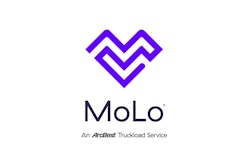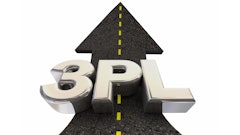
For supply chain and manufacturing leaders, regulatory compliance has always been a demanding responsibility. However, in today’s complex product development environment, it’s quickly becoming overwhelming. We're no longer dealing with a steady stream of new requirements; we're navigating a full-on flood.
Regulatory frameworks are evolving rapidly, with new rules emerging in areas such as sustainability, data privacy, ethical sourcing, export controls, and product safety. The result is a growing burden of compliance that touches every part of the product lifecycle and it’s not going away any time soon.
Yet amid the rising complexity, one thing is becoming clear: traditional tools and fragmented processes can’t keep up. To manage compliance at scale, organizations need a connected, end-to-end approach to product data – the digital thread.
A shifting regulatory landscape
The pace and scope of regulatory change is accelerating. Where companies once had time to react and adjust processes, many are now finding themselves racing to interpret and implement requirements in real time. Governments and regulatory bodies are acting swiftly to address global concerns – from climate change and human rights to data protection and the ethical use of AI. Compliance teams must respond quickly, but doing so without the right tools introduces enormous risk.
Consider the European Union’s Ecodesign for Sustainable Products Regulation (ESPR). It aims to transform how products are designed, manufactured, and marketed. At the center of this initiative is the Digital Product Passport (DPP), which will require manufacturers to collect and disclose detailed product-level information, including materials, environmental footprint, and repairability. Similar mandates are emerging globally:
· The EU AI Act for responsible AI use
· U.S. import/export control restrictions
· Battery traceability and conflict minerals regulations
· Carbon footprint disclosures and circular economy policies
These laws demand granular, trustworthy, and traceable data across the product lifecycle. And yet, many organizations still rely on spreadsheets, disconnected systems, or siloed knowledge to manage compliance – approaches that are unsustainable under today’s conditions.
The expanding scope of accountability
One of the most significant shifts in recent years has been the expansion of responsibility beyond the four walls of the business. Today, companies are increasingly being held accountable for the actions of their entire value chain – from material and component suppliers to logistics partners to product recyclers.
This is especially challenging in sectors like automotive, electronics, and aerospace, where thousands of parts sourced from hundreds of suppliers form a single product. In these environments, even a minor gap in documentation or supplier transparency can derail compliance efforts. For example, failing to provide proper origin data or environmental disclosures can delay customs clearance, restrict product sales, or trigger a recall.
And while large companies may have resources to manage these requirements, small and mid-sized manufacturers often struggle to keep up, creating vulnerabilities in the compliance chain that can affect everyone involved. The stakes are high – denied market access, blocked shipments, expensive redesigns and recalls, reputational damage, and multimillion dollar fines.
The only viable way to achieve consistent traceability and collaboration across the value chain is through a shared, structured, and accessible product data model and well documented collaborative processes. Enter: the digital thread.
The digital thread: A compliance game-changer
The digital thread is a connected framework that links processes and product data throughout the entire product lifecycle – from design and engineering, to procurement, production, and service. When integrated with a product lifecycle management (PLM) platform, it transforms compliance from a reactive burden into a proactive, strategic capability. Here’s how the digital thread redefines compliance:
· Live traceability of materials, parts, and design changes across the entire supply chain
· Real-time access to compliance documentation and certifications
· Automated change impact analysis, to see how new regulations or supplier changes affect existing products
· Audit-ready reporting, reducing the need for reactive documentation sprints
· Tighter collaboration between compliance, engineering, procurement, and operations teams
By threading compliance into the core of product development and operations, companies avoid data silos, reduce manual work, and make regulatory alignment part of every decision – not just a last-minute box to check.
Preparing for the future
Companies that treat compliance as an afterthought often find themselves in firefighting mode, rushing to gather data during audits, patching supplier documentation gaps, or reworking designs after the fact. Those that embrace the digital thread gain strategic foresight. They can adapt quickly to evolving regulations, respond confidently to audits and enforcement actions, accelerate product launches by ensuring compliance from the outset, build trust with suppliers, regulators, customers, and investors by proving transparency and ethical practices
Making compliance a C-suite priority
For executives, the message is clear: compliance is no longer a legal formality – it’s a strategic business process. To succeed in a compliance-heavy future, companies must:
· Assess current compliance infrastructure and identify gaps
· Invest in digital tools that support traceability and data transparency
· Foster collaboration across teams that manage design, sourcing, and quality
· Monitor global regulations continuously and adjust processes accordingly
· Treat compliance as a core business process, not just a legal obligation
Those who do will not only reduce risk – they’ll unlock new value, meet rising customer expectations, and turn compliance into a competitive advantage.
The regulatory landscape will only grow more complex. But complexity doesn't have to mean chaos. With the digital thread as the foundation, manufacturers can gain the clarity, agility, and resilience needed to thrive – no matter what the compliance climate brings next.




















